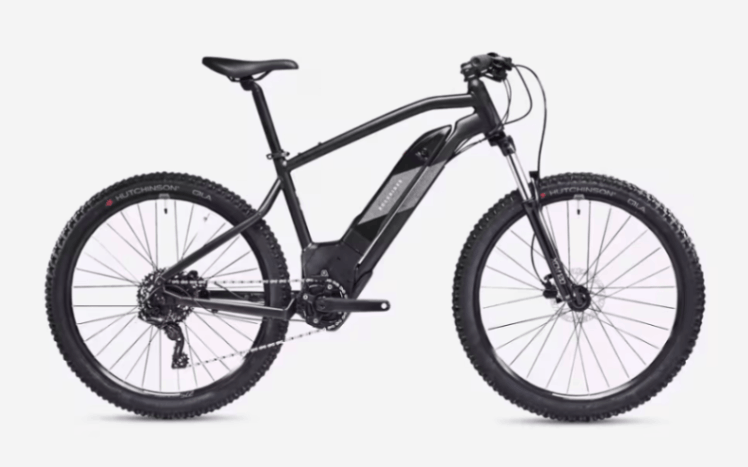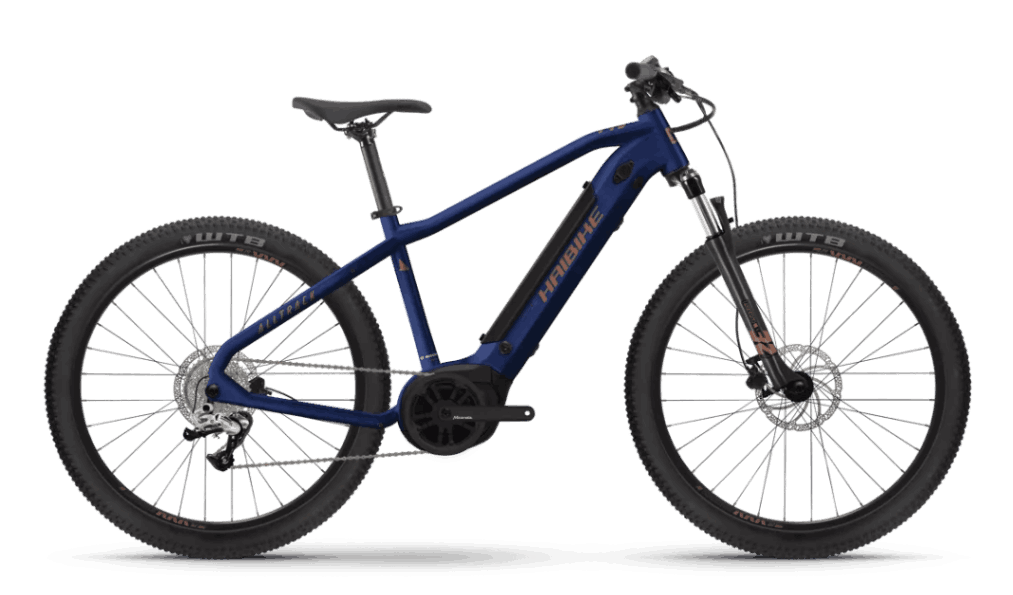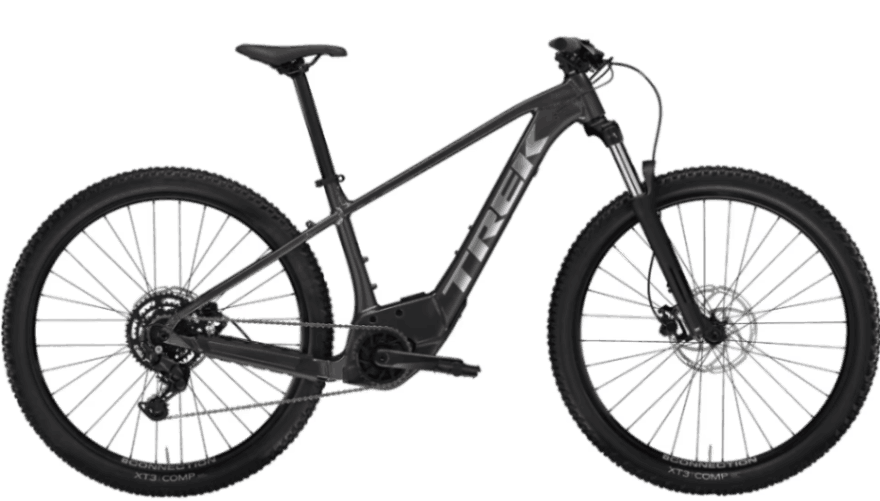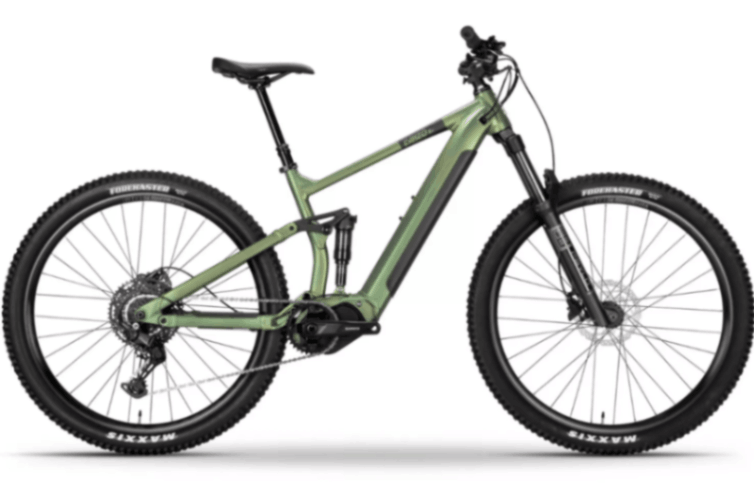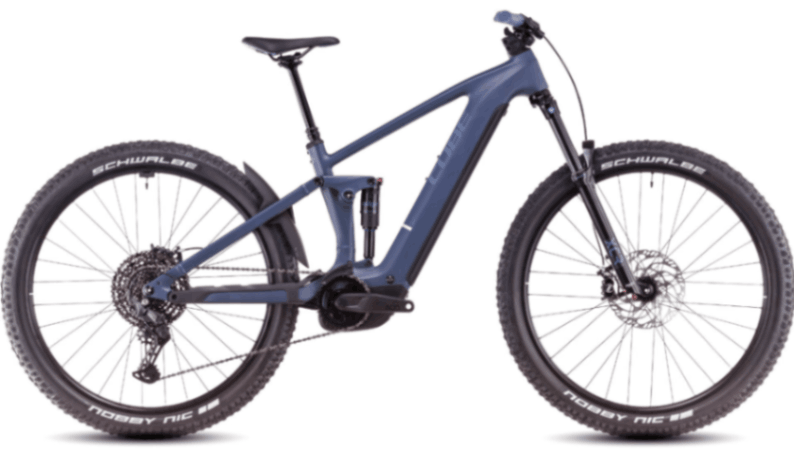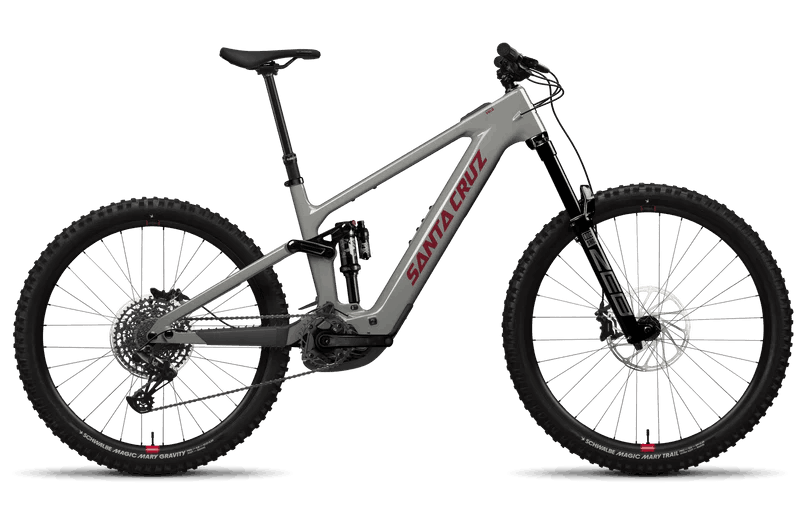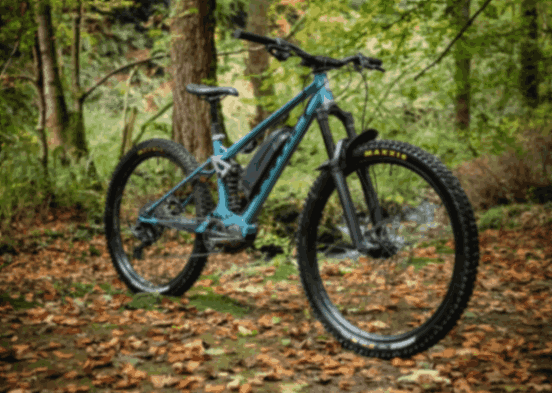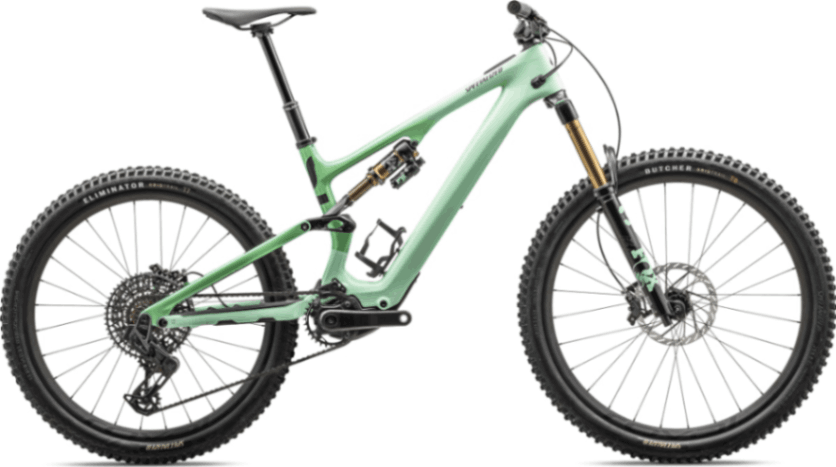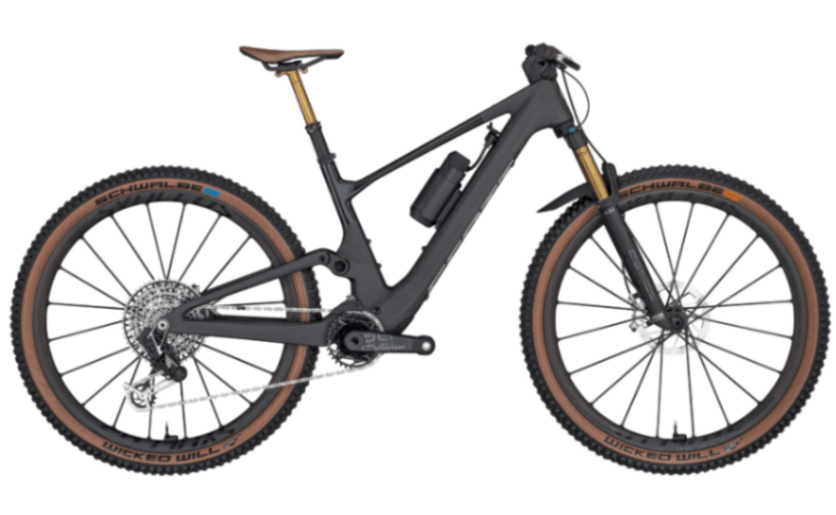Buyer's guide: Electric mountain bikes
Not sure if an electric mountain bike is what you're looking for? Head to our guide to types of e-bike for an overview of other options.
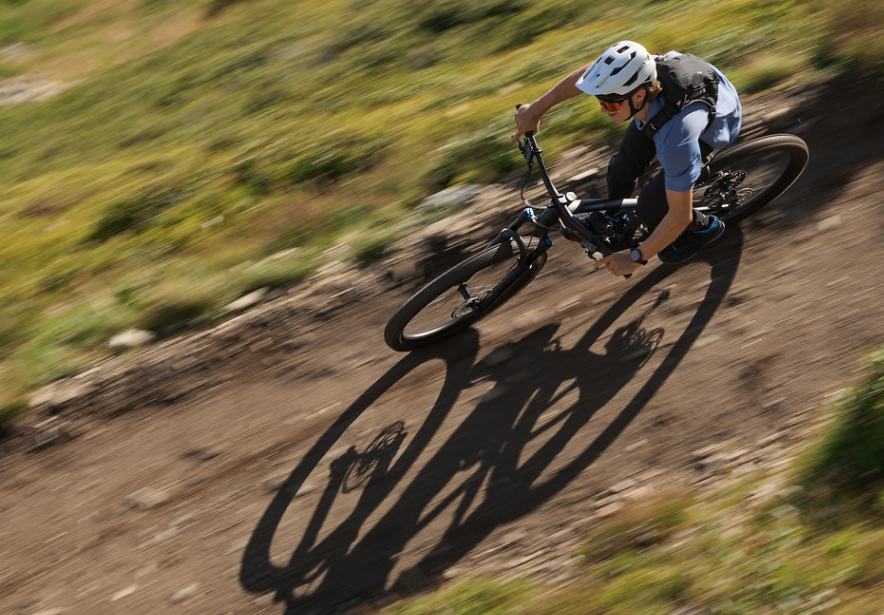 Electric mountain bikes are fast and fun everywhere (Pic: Cube)
Electric mountain bikes are fast and fun everywhere (Pic: Cube)
Key takeaways
-
eMTBs are usually a purely recreational tool - some are suitable for commuting but other kinds of electric bike are better for utility purposes
-
Under current UK regulations, you can ride a road-legal electric bike on any trails that you can ride a pedal bike on, including bridleways and most MTB trail centres
-
A full-suspension electric mountain bike is probably the most complex bicycle you can buy and prices tend to reflect that!
Benefits of electric mountain bikes
The number one benefit of electric mountain bikes is that they're fun to ride. Regular mountain bikes are fun too, but the addition of a motor and battery makes the least fun part (winching your way up climbs) also fun, so it's fun everywhere.
The term "mountain bike" has always been a bit of a misnomer as most of them never go anywhere near actual mountains. "Hillside bike" or "woods bike" would be more appropriate but also considerably less catchy. The key thing is that mountain bikes, electric or otherwise, are designed for off-road riding. And by "off-road" we don't just mean wide gravel forest track, repurposed railway path or canal tow path, any of which are entirely ridable on a trekking or gravel bike. Mountain bikes are for steep, narrow trails, rocks, roots, drops and jumps. The less homogeneous the trail surface and the more feature-laden the trail, the more suitable a mountain bike is to ride it.
Key features to look for
Frame and fork
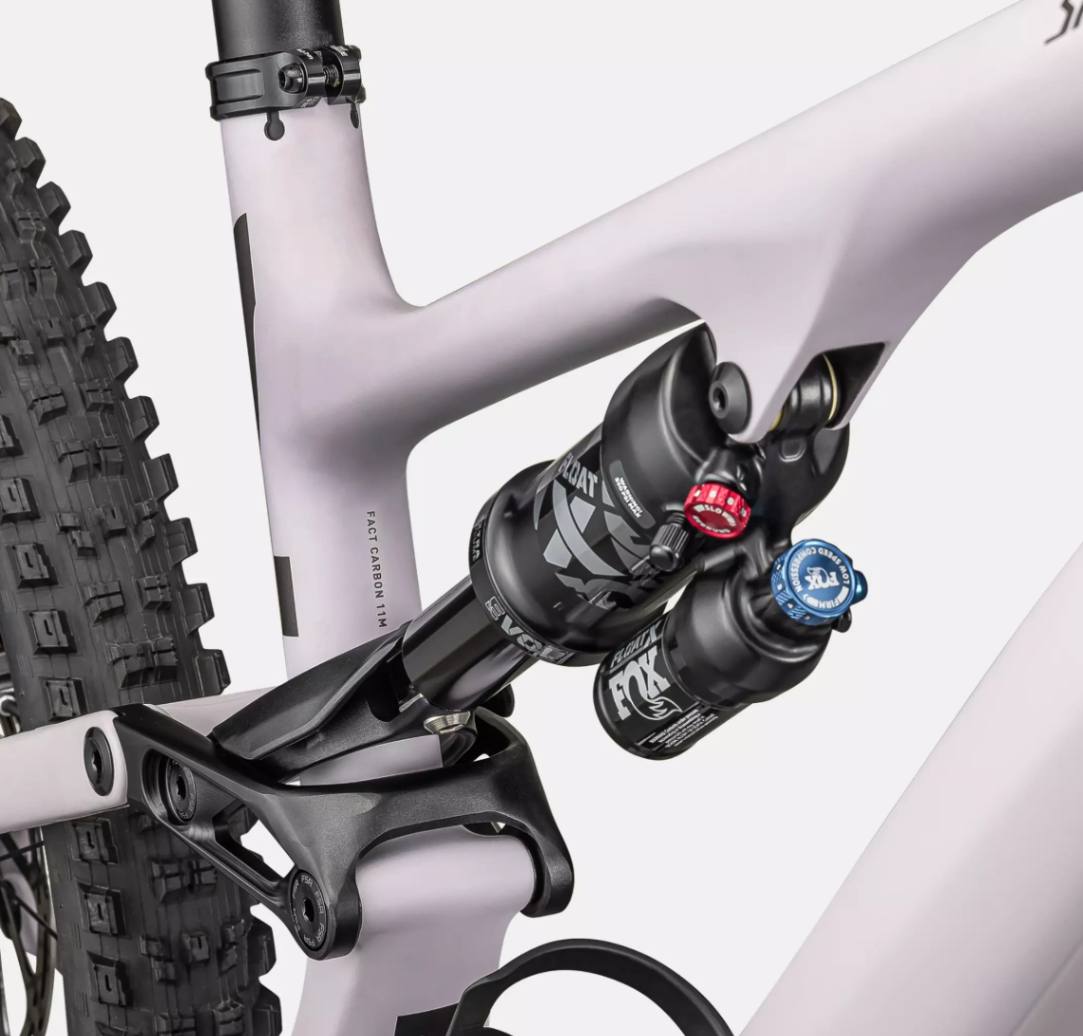 From around £3,000 rear suspension is a key feature of an eMTB (Pic: Specialized)
From around £3,000 rear suspension is a key feature of an eMTB (Pic: Specialized)
There are two broad frame categories that you'll encounter when looking for an electric mountain bike. The first is a traditional rigid frame, fundamentally the same design as we've had for over a century. A rigid eMTB frame isn't wildly different to a road, gravel or trekking bike frame - it's a different shape to handle well off road, it'll be built around bigger wheel/tyre combinations and it'll be more robust, but the general concept is the same. When combined (as it usually is) with a telescopic suspension fork at the front, this kind of bike is known as a hardtail. You'll see that configuration on lots of urban and trekking e-bikes too, but the suspension fork on a mountain bike typically has more travel (that is, how far it can move and hence the size of bump it can absorb). The fork on a trekking bike will smooth out mildly uneven surfaces and maybe take the edge off a small pothole, but the fork on a mountain bike will maintain control over substantial roots, rocks and ruts.
While hardtail mountain bikes are lots of fun (and a popular choice for cross-country racing, where low weight is still a key consideration) and very capable of tackling demanding trails under a skilled rider, as the terrain gets harder the challenge grows. This is where the full-suspension e-bike comes in. Rather than a rigid frame, a suspension frame has a pivoting swingarm to allow the rear wheel to move vertically relative to the main frame, and some kind of linkage system to drive a shock absorber to control that movement. There are many different ways that this can be done, and most manufacturers will have their own design that they'll say is the best. In reality the differences between bikes of similar travel are very nuanced - if you're getting your first full-suspension e-bike then it's pretty safe to assume that whatever system you end up with will be very effective.
The main thing to think about is how much suspension travel you need, which is based on what kind of riding you want to do. The various sub-categories of eMTB don't correlate perfectly with suspension travel, but they're pretty close. You'll find choices between 100 and 180mm of travel, following a spectrum from cross-country (lots of climbing, so low weight and efficiency is important) through to downhill racing (no climbing but very high speeds and extreme terrain). As with most things in life, if you're starting out it's best to avoid the extremes and go somewhere in the middle. Somewhere in the 130-150mm range you'll find so-called "trail" bikes, which are intended as all-rounders - not as fast uphill as an XC bike, not as capable downhill as a DH bike, but able to cope with most things. Start there and if you find your tastes take you in one direction or the other, then go a bit more niche with your next bike...
Motor
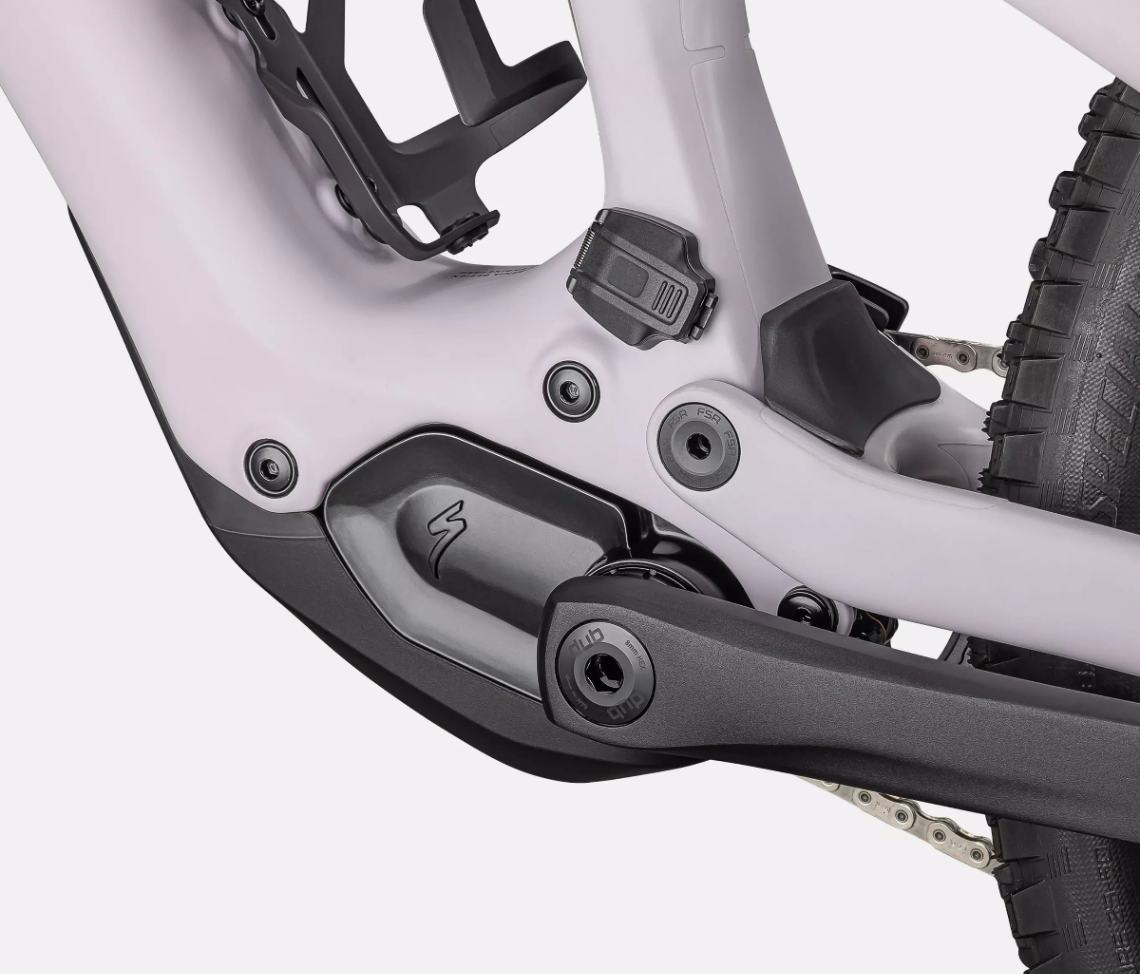 Lightweight eMTBs feature super-compact motors (Pic: Specialized)
Lightweight eMTBs feature super-compact motors (Pic: Specialized)
You'll find a few electric mountain bikes with hub motors, but for off-road performance a mid-drive motor unit is the best option. The main reason for this is that driving the rear wheel through the bike's transmission allows the full range of rear gears to be used, so the motor can spin at a more efficient speed even if the bike is going quite slowly giving you maximum hill-climbing capability. Mountain bikes with suspension also benefit from having the weight of the motor in the frame rather than in a wheel. Suspension works most effectively when the sprung mass (the parts that move, including the wheel) are lighter relative to the unsprung mass (the frame).
There are two broad design schools when it comes to electric mountain bikes. One, which you may see referred to as the "full fat" or "full power" option is to use the most powerful, high-torque motor possible to boost climbing and acceleration, leaving you to just pedal a little bit and steer trhe irht, The other option prioritises low weight and a familiar ride feel over ultimate capability, with lighter, less pokey motors that are more about delivering a helping hand rather than making everything almost effortless.
Sensors and control units are particularly important for mountain bikes, where careful modulation of power delivery is key to successfully negotiating difficult terrain. If the motor assistance comes in abruptly or too powerfully, you'll find it harder to ride the tricky stuff. Fortunately most mainstream drive unit manufacturers use sensitive torque sensors to measure rider input alongside wheel speed sensors to get the bike's speed over the ground and can therefore tweak the delivery of assistance as appropriate - for example, feeding the power in if you're cranking up a steep, rough climb to avoid breaking traction.
Find out more at our guide to e-bike motors.
Battery and range
Making range predictions for electric mountain bikes is challenging. If you're choosing an e-bike for commuting, things are reasonably straightforward. You know how far your daily round trip is and how many hills you'll have to tackle on the way and make a reasonable stab at your desired range from there. On an e-bike that you're riding purely for fun on unpredictable terrain, all bets are off. You might be riding for an hour or all day. You might be shuttling up fire roads or challenging yourself with super-steep technical climbs. The number of variables is huge.
The safest bet, then (and the way that most manufacturers have historically gone) is to fit a big battery and play safe. But the downside of that is that big batteries weigh more. Many riders find that after a typical ride they've still got plenty of charge left, which essentially means that they're hefting around more battery than they really need. So a more recent trend has been towards lighter weight eMTBs with more compact, lower torque motors and smaller batteries (which you can get away with as the smaller motor is less demanding).
Some bikes have battery options - they'll accommodate a big battery but you can also fit a smaller one and save some weight. The other increasingly popular option is for the bike to come with a smaller primary battery but with second "range extender" battery that you can add (or leave behind as appropriate). While primary batteries are increasingly integrated into the frame, range extenders generally mount externally, often where a water bottle would otherwise go. The two-battery setup is versatile and lets you set the bike up differently for different kinds of rides.
Find out more in our guide to e-bike batteries.
Wheels and tyres
One of the distinguishing characteristics of an electric mountain bike compared to other e-bikes is the wheel and tyre setup. Most e-bikes are intended primarily for relatively smooth, firm surfaces and the tyres that they come with reflect that. eMTBs, though, are intended for loose, uneven, rocky, muddy or otherwise unpredictable surfaces and hence come with large-volume tyres with a prominent knobbly tread. There are nuances with that, with some MTB tyres intended for speed on harder surfaces and some for grip on loose or wet trails, but in general an eMTB will have bigger, blockier tyres than other e-bikes.
To accommodate bigger tyres, the wheel rim is typically wider (which also makes the wheel stronger). The hubs generally have wider axles, again for strength and stiffness. One of the main confusions in the eMTB market, though, is wheel sizes. For decades mountain bikes used 26in wheels (559mm rim diameter in the ISO/ETRTO system) for largely accidental reasons. Nowadays you'll only find 26in wheels on a handful of children's bikes, with the dominant wheels being the larger 29in (622mm ETRTO) and 27.5in (584mm ETRTO) sizes. Or sometimes both - there are some so-called "mullet" eMTBs with a 29in front wheel and a 27.5in rear.
It's best not to get too hung up on wheel sizes. 29in wheels work better on rough ground but can be tricky to package into long-travel full-suspension bikes or very small frames - it's not unusual to see 29 on larger frame sizes and 27.5 on smaller versions of the same bike. Find a bike that you like and that fits well and the wheels willl be what they are.
Additional features
Depending on your needs, there are various extra features that you'll want to look out for.
- Dropper posts: Being able to adjust the saddle height via a lever on the handlebars is super useful on an off-road bike, and so-called "dropper" seatposts are now almost ubiquitous on electric mountain bikes. It's one of the things that sometimes gets, um, dropped on entry-level models, though, so keep an eye out for that.
- Heavy duty tyres: Mountain bike tyres are available in a huge range of tread patterns, widths and casings. One area where manufactures sometimes try to save weight is by using lighter tyres with thinner sidewalls. Often these aren't really robust enough, especially on an e-bike that weighs more and facilitates a higher average speed. By making more things rideable, you try to ride more things and that sometimes involves riding at pointy rocks...
- Pedals: There are two kinds of pedals for eMTBs. Platform pedals are, as the name suggests, big, grippy, flat platforms that you put your feet on. They let you move your feet around and also make it easy to get clear of the bike in a crash. There are also clip-in pedals (a bit like miniature ski bindings) that engage with a metal cleat on the sole of the specially-designed shoe. These are great for pedalling and make it easier to keep your feet on the pedals over very rough ground.
Brands to consider
- Amflow
- Cannondale
- Canyon
- Cotic
- Cube
- Giant
- Haibike
- Santa Cruz
- Scott
- Specialized
- Trek
- Voodoo
Budget and price
e-bikes in general come in a wide range of prices, but the spread for electric mountain bikes is perhaps wider than most.
Under £1,000
- e-bikes that look superficially like mountain bikes but won't cope well with anything more challenging than a canal towpath
- Hub motors, heavy frames, cheap components
- For a real off-road capable bike at this price, look for offers on the previous year's model or look at used bikes
£2,000-3,000
- Around £2,000 is the realistic starting point for a capable, mid-drive hardtail eMTB
- Looking for full suspension? You're looking at around £3,000 to get something worthwhile
- These are the prices at which you're getting a proper trail-ready electric mountain bike
- Usually aluminium frames
£3,000-6,000
- Lots of excellent full-suspension options with increasingly sophisticated forks and rear shocks
- This bracket is the high end for hardtail eMTBs
- Lightweight and strong carbon fibre frames
£6,000+
- Even lighter frames
- Top of the range transmission components and brakes
- Arguably the point of diminishing returns
Buying tips
- Consider what kind of riding you want to do. Some people want an eMTB so they can do lots of bike park laps, focussing entirely on the descents. If that's you, then a longer-travel enduro bike will work well. If you want to cover ground quickly on fairly mellow terrain, then look at hardtails. If you're not sure, aim for the "Goldilocks" 130-150mm trail bike sector - these bikes are real all-rounders.
- Most shops only carry a handful of different brands, so you may need to visit several to see everything that you're interested in. Look out for local demo days too - many manufacturers have travelling demo fleets so you can get a proper test ride on real trails.
- Look carefully at manufacturer's sizing charts. Most brands use XS/S/M/L/XL sizing (with average adults being M) but the exact boundaries (and overlaps) vary widely. Some brands, like Specialized, have unique sizing schemes.
- Don't forget the Cycle To Work scheme - you don't have to use it to buy a commuting bike!
Recommendations
There are hundreds of different electric mountain bikes on the market, although a lot of them are broadly the same but with different component specifications (and colours). If you like the look of a particular bike but it's a bit spendy, there's a good chance that there's a cheaper model using the same frame that'll give you 90% of the performance. Here's a cross-section of eMTBs that have caught our eye for one reason or another.
Entry level
The sensible entry level for eMTBs is from around £1,500. Don't expect rear suspension in this category, there just isn't the budget.
Rockrider E-ST 500
Rockrider is one of the house brands of sporting goods behemoth Decathlon. The E-ST 500 is the brand's entry-level eMTB, with budget but respectable components like a Suntour suspension fork, Microshift transmission and Tektro hydraulic disc brakes. The Brose motor has a relatively lowly 50Nm of torque but it's a mid-drive unit so you've got gears to help. You don't get a fully-integrated battery, but the 420Wh pack sits neatly in the aluminium frame. This is a fairly basic bike but it'll be fine for mellower off-road adventures.
Haibike Alltrack 4
At around £2,000 you're getting a pretty respectable hardtail eMTB. Haibike's Alltrack 4 has an aluminium frame with neatly integrated 500Wh battery, a Bosch Performance Line mid-drive motor unit with 75Nm of torque and a Shimano transmission. Haibike use different wheel sizes for different frame sizes, with the Small bikes getting 27.5in wheels, Large and XL having 29in and the Medium being available with either. You're still not getting a dropper seatpost but the specification here is generally solid.
Trek Marlin 6+
The Marlin 6+ is one of industry giant Trek's entry-level eMTBs. Next to the non-electric Marlin, the 6+ has a very similar profile (the frame geometry is the same) but with a chunky downtine that costains the 400Wh battery. The motor is a Bosch Active Line Plus unit with 50Nm of torque - not that beefy but sufficient for most things that you'd want to tackle on this bike. The XS and S size bikes come with 27.5in wheels while M, L and XL are 29in.
Mid range
For full off-road capability you should be looking at full suspension e-bikes, and to get one of those that works reasonably well you need to be budgeting for at least £3,000.
Voodoo Canzo-E
Voodoo has long had a reputation for good-performing entry-level bikes and the Canzo-E extends that into the full-suspension eMTB arena. The Canzo-E is a 140mm travel trail bike built around a Shimano EP6 drive unit with a healthy 85Nm of torque. The transmission components and brakes are from Shimano too, so it's a solid specification. You get a dropper post too, making this a complete off-road package.
Cube Stereo Hybrid One44 Pro 800
In many ways the Cube Stereo Hybrid One44 is similar to the Voodoo Canzo-E - same suspension travel, similar layout, Bosch 85Nm motor and so on. The extra cash goes into a more sophisticated frame (the aluminium front end's smooth lines could pass for carbon fibre) and generally uprated components, with a wider range of gears and more powerful brakes among other things. The standard battery is a hefty 800Wh unit so the Stereo is ready for all-day adventures.
Cube Stereo Hybrid One44 Pro 800, £3,399
Santa Cruz Vala R
£6,699 is somewhat above our nominal mid-range price band, but we're including the Vala R here because it's the cheapest model in the range from Santa Cruz, long considered a high-end brand. Santa Cruz has been building mountain bikes for thirty years and got into eMTBs earlier than many of its rivals. The Vala has a full carbon fibre frame and a full suite of trail-ready components inlcuding RockShox and Fox suspnesion, SRAM 12 speed transmission and brakes with huge 220mm rotors. It uses the ever-popular Bosch Performance CX motor with 85Nm of torque and 600W peak power. In the interests of a bit of weight saving, the battery is a 600Wh unit. Notably you can get the Vala in an XXL size, so if you're 2m tall you can still get a bike that fits!
Top of the range
The sky's the limit with electric mountain bikes, with plenty of options well into five figures. Look for wireless transmission, carbon fibre everywhere and highly-adjustable suspension.
Cotic Rocket
Steel mountain bikes are something of a rarity in 2025, steel full-suspension bikes even less so. Cotic's Rocket is unique in being a steel full-suspension e-bike, building on the UK company's long history of building ferrous frames. The Rocket is built in the UK and while its looks won't be to everyone's taste it packs state of the art kit. The drive unt is Shimano's EP801 with 85Nm of torque. The battery unit piggybacked on the down tube may appear a bit clunky, but there's a big upside in being able to choose from three different battery capacities - choose from 418, 504 or 630Wh versions.
Specialized Turbo Levo SL Pro
The Turbo Levo SL 2 Pro is at the top of Specialized's Turbo Levo lightweight eMTB range, with only the S-Works models above it. As the name suggests, the SL range is intended as a low-weight option for riders who don't mind putting in a bit of meaningful pedalling themselves. In the interests of low weight, the Turbo Levo's battery is just 320Wh. Specialized's own SL1.2 motor offers 50Nm of torque and claims to be efficient enough to get five hours out of the battery on Eco mode. A 160Wh range extender battery is available if the main battery isn't enough.
Scott Lumen eRide 900 SL
Yes, you are reading the price correctly. The Lumen is what Scott call a "down-country" bike and what most riders would probably just call a lightweight trail bike. The level of integration on the Lumen's full carbon fibre frame is remarkable. You'd expect the TQ motor and 360Wh battery to be tucked inside the frame, but Scott has also packed the rear shock absorber in there too. Add in cable-free wireless transmission and you end up with an impressively clean look. As you'd expect for the money, the eRide 900 is loaded with high-end kit including carbon fibre wheels. You even get a range extender battery with it. Claimed weight (without the range extender) is 15.5kg (34lb).
Frequently asked questions
Why are electric mountain bikes so expensive?
The extra complexity of rear suspension adds design and manufacturing costs as well as additional parts (the shock absorber, various bushings and bearings). A full-suspension mountain bike is already a fairly complex thing as bicycles go, and giving it electric pedal assistance only makes it more so. Remember that you're well into the point of diminishing returns with the really spendy models - a £12,000 bike isn't twice as good as a £6,000 bike!
Why is there such a big variation in battery size between models?
The usual trade-off between range and weight is more pronounced on a mountain bike, which is likely to spend proportionately more time climbing steep hills than a more utilitarian e-bike. And because they're essentially ridden for fun, which is a legendarily subjective thing, manufacturers acknowledge that not everyone wants the same thing. Some bikes are very much "helping hand" with lower levels of assistance, requiring less capacious and lighter batteries. Others are full power, ride all day with minimum effort bikes that demand big batteries.
Is a range extender battery useful?
Useful yes, essential no. There's a lot of benefit in having a smaller primary battery that you can supplement with a piggyback pack if you need it. If you mostly ride for an hour or two you'll benefit from leaving some weight behind. If you're heading for some proper big country for a weekend epic, take the extra battery.
Summary
Electric mountain bikes are one of the hardest e-bike categories to make sense of. There's masses of variation within the category - there are as many different kinds of eMTB as there are different kinds of e-bike more broadly. With lots of options of motor power/torque, suspension travel and battery size, the ideal bike for you is almost certainly out there. But you'll have to narrow things down by deciding what kind of rides you want to do. If you really don't know, choose an all-rounder "trail" bike in the 130-150mm travel range.
Related content
Read more great content from ebike.help and become an electric bike expert today.

